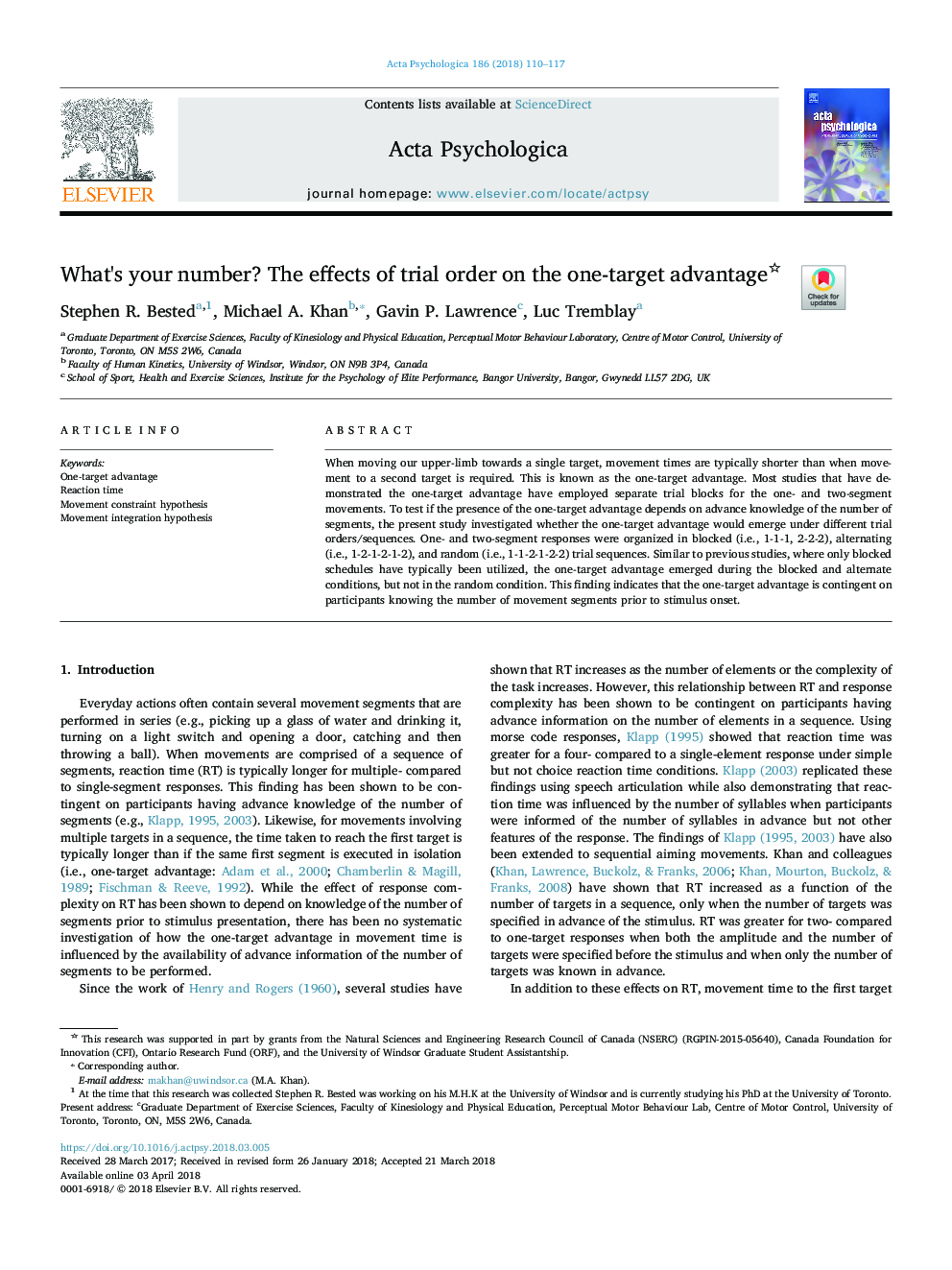| کد مقاله | کد نشریه | سال انتشار | مقاله انگلیسی | نسخه تمام متن |
|---|---|---|---|---|
| 7276723 | 1473572 | 2018 | 8 صفحه PDF | دانلود رایگان |
عنوان انگلیسی مقاله ISI
What's your number? The effects of trial order on the one-target advantage
ترجمه فارسی عنوان
شماره شما چیست؟ اثرات نظم محاکمه بر مزیت یک هدف
دانلود مقاله + سفارش ترجمه
دانلود مقاله ISI انگلیسی
رایگان برای ایرانیان
کلمات کلیدی
مزیت یک هدف، زمان پاسخ، فرضیه محدودیت حرکت، فرضیه ادغام حرکتی،
ترجمه چکیده
هنگام حرکت اندام فوقانی به سمت یک هدف واحد، زمان حرکت معمولا کوتاه تر از زمانی است که حرکت به هدف دوم مورد نیاز است. این به عنوان یک هدف هدف شناخته شده است. اکثر مطالعاتی که مزیت یک هدف را نشان داده اند، بلوک های آزمایش جداگانه ای را برای حرکات یک و دو بخش استفاده کرده اند. برای بررسی اینکه آیا حضور یک هدف در دانش پیشین تعدادی از بخش ها بستگی دارد، در مطالعه حاضر بررسی شده است که آیا مزیت یک هدف در فرضیات / توالی های مختلف محاکمه ظاهر می شود یا نه. پاسخهای یک و دو قطعه در مسدود (یعنی 1-1-1، 2-2-2)، متناوب (یعنی 1-2-1-2-1-2) و تصادفی (یعنی 1 -1-2-1-2-2) توالی های محاکمه. همانند مطالعات قبلی که برنامه های مسدود شده معمولا مورد استفاده قرار می گیرند، مزیت یک هدف در شرایط مسدود شده و متناوب ظاهر شد، اما نه در شرایط تصادفی. این یافته نشان می دهد که مزیت یک هدف به شرکت کنندگان بستگی دارد که تعداد جنبه های جنبش قبل از شروع محرک را می دانند.
موضوعات مرتبط
علوم زیستی و بیوفناوری
علم عصب شناسی
علوم اعصاب شناختی
چکیده انگلیسی
When moving our upper-limb towards a single target, movement times are typically shorter than when movement to a second target is required. This is known as the one-target advantage. Most studies that have demonstrated the one-target advantage have employed separate trial blocks for the one- and two-segment movements. To test if the presence of the one-target advantage depends on advance knowledge of the number of segments, the present study investigated whether the one-target advantage would emerge under different trial orders/sequences. One- and two-segment responses were organized in blocked (i.e., 1-1-1, 2-2-2), alternating (i.e., 1-2-1-2-1-2), and random (i.e., 1-1-2-1-2-2) trial sequences. Similar to previous studies, where only blocked schedules have typically been utilized, the one-target advantage emerged during the blocked and alternate conditions, but not in the random condition. This finding indicates that the one-target advantage is contingent on participants knowing the number of movement segments prior to stimulus onset.
ناشر
Database: Elsevier - ScienceDirect (ساینس دایرکت)
Journal: Acta Psychologica - Volume 186, May 2018, Pages 110-117
Journal: Acta Psychologica - Volume 186, May 2018, Pages 110-117
نویسندگان
Stephen R. Bested, Michael A. Khan, Gavin P. Lawrence, Luc Tremblay,
